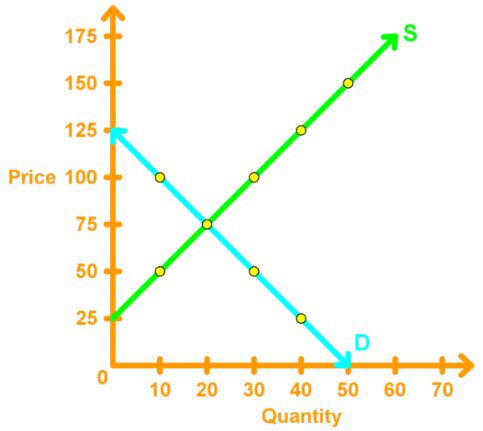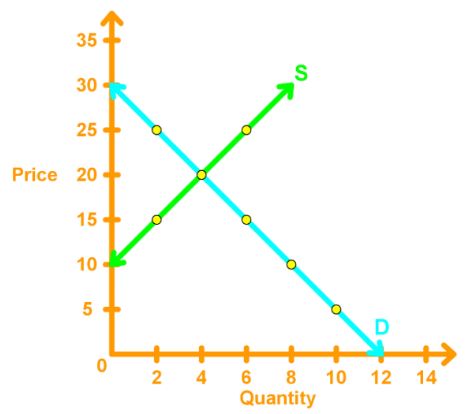Price Ceilings
Price Ceiling: a government law that makes it illegal to charge higher than the specified price.
Two things can happen when a price ceiling is implemented.
Case 1: The price ceiling is above the equilibrium price. In this case there is no effect on anything, and the equilibrium price and quantity stay the same.
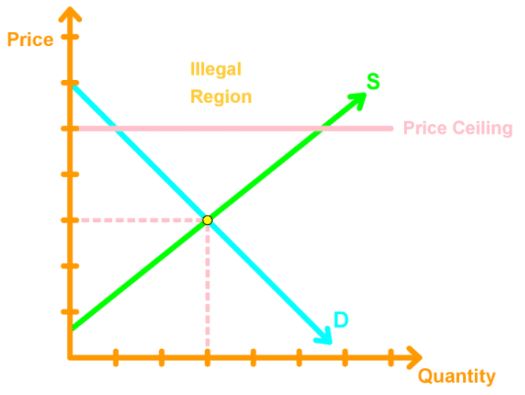
Case 2: The price ceiling is below the equilibrium price. In this case, there will be an underproduction of the quantity supplied, and a higher willingness to pay from consumers. This decreases the economic surplus and creates deadweight loss.
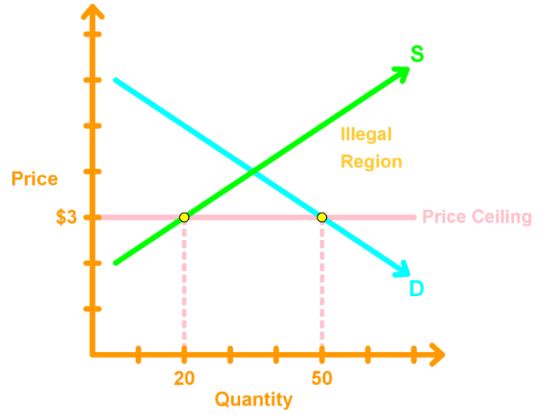
Problems with Rent Ceiling
- Shortage of Housing
- Creates a Black Market
- Increased Search Activity
Price Floor
Price Floor: a government law that makes it illegal to charger lower than the specified price.
Two things can happen when a price floor is implemented.
Case 1: The price ceiling is below the equilibrium price. In this case there is no effect on anything, and the equilibrium price and quantity stay the same.
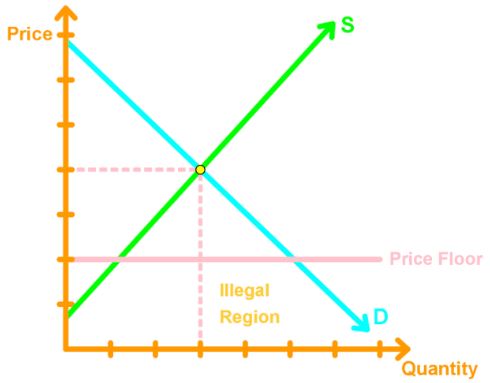
Case 2: The price ceiling is above the equilibrium price. In this case, there will be an overproduction of the quantity supplied, and a lower willingness to pay from consumers. This decreases the economic surplus and creates deadweight loss.
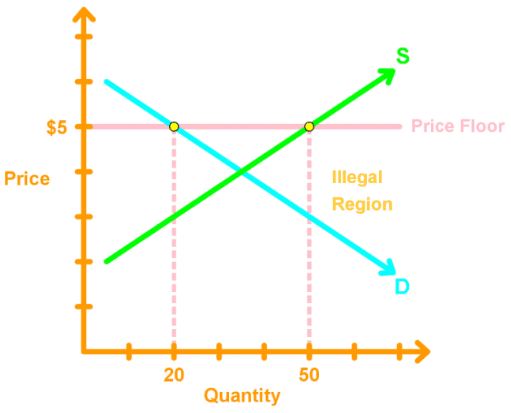
Problems with Price Floor
- Surplus of labour & unemployment
- Job Searching

